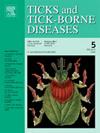Effective control of severe fever with thrombocytopenia syndrome in Daishan County, a former epicenter in Zhejiang Province, Southeast China
IF 3.4
2区 医学
Q2 INFECTIOUS DISEASES
引用次数: 0
Abstract
Background
Severe fever with thrombocytopenia syndrome (SFTS) is an emerging tick-borne infectious disease with high case fatality rate. In 2016, a series of community-based comprehensive measures were put into effect in Daishan. This study was conducted to explore the change in the epidemiology of SFTS following the implementation of those measures..
Methods
Descriptive and statistical analyses were conducted to characterize the epidemiology of SFTS.
Results
In total, 156 cases were reported in Daishan during 2011–2023, with the average annual incidence rate of 66.58 per million. The incidence increased with age, and the case fatality rate was significantly higher among the cases over 65 years (P < 0.050). After the implementation of the community-based comprehensive measures in 2016, the incidence was remarkably declined from 2015 to 2019 (Annual Percent Change [APC] = -39.98, P < 0.001) and remained relatively stable without significant alteration between 2019 and 2023 (APC = 15.77, P = 0.156), which was in contrast to the trends in Zhejiang and Mainland China. The hospital type that was most frequently visited for the initial medical-seeking shifted from type I (59.26 %) in 2011–2016 to type II (56.52 %) in 2017–2023. The time intervals between first-visiting and confirmation, onset and confirmation were shortened in the period of 2017–2023 (P < 0.001). Consequently, the case fatality was insignificantly reduced (8.70 % vs. 20 %, P = 0.084).
Conclusions
The community-based comprehensive measures are highly efficacious in the containment of SFTS.
浙江省岱山县发热伴血小板减少综合征有效防控
背景严重发热伴血小板减少综合征(SFTS)是一种新出现的蜱媒传染病,病死率很高。2016 年,一系列以社区为基础的综合措施在岱山开始实施。结果2011-2023年间,岱山共报告156例,年平均发病率为66.58/万。发病率随年龄增长而增加,65 岁以上病例死亡率明显升高(P < 0.050)。2016年实施社区综合防治措施后,2015年至2019年发病率明显下降(年百分比变化[APC] = -39.98,P <0.001),2019年至2023年保持相对稳定,无明显变化(APC = 15.77,P = 0.156),这与浙江和中国大陆的趋势形成鲜明对比。首次就诊最多的医院类型从2011-2016年的I类(59.26%)转变为2017-2023年的II类(56.52%)。在 2017-2023 年期间,首次就诊与确诊、发病与确诊之间的时间间隔缩短(P <0.001)。因此,病死率显著降低(8.70 % vs. 20 %,P = 0.084)。结论以社区为基础的综合措施在遏制自发性肺结核方面非常有效。
本文章由计算机程序翻译,如有差异,请以英文原文为准。
求助全文
约1分钟内获得全文
求助全文
来源期刊

Ticks and Tick-borne Diseases
INFECTIOUS DISEASES-MICROBIOLOGY
CiteScore
6.90
自引率
12.50%
发文量
185
审稿时长
6-12 weeks
期刊介绍:
Ticks and Tick-borne Diseases is an international, peer-reviewed scientific journal. It publishes original research papers, short communications, state-of-the-art mini-reviews, letters to the editor, clinical-case studies, announcements of pertinent international meetings, and editorials.
The journal covers a broad spectrum and brings together various disciplines, for example, zoology, microbiology, molecular biology, genetics, mathematical modelling, veterinary and human medicine. Multidisciplinary approaches and the use of conventional and novel methods/methodologies (in the field and in the laboratory) are crucial for deeper understanding of the natural processes and human behaviour/activities that result in human or animal diseases and in economic effects of ticks and tick-borne pathogens. Such understanding is essential for management of tick populations and tick-borne diseases in an effective and environmentally acceptable manner.
 求助内容:
求助内容: 应助结果提醒方式:
应助结果提醒方式:


